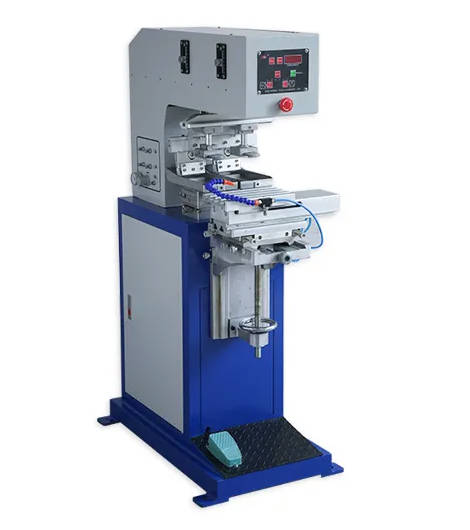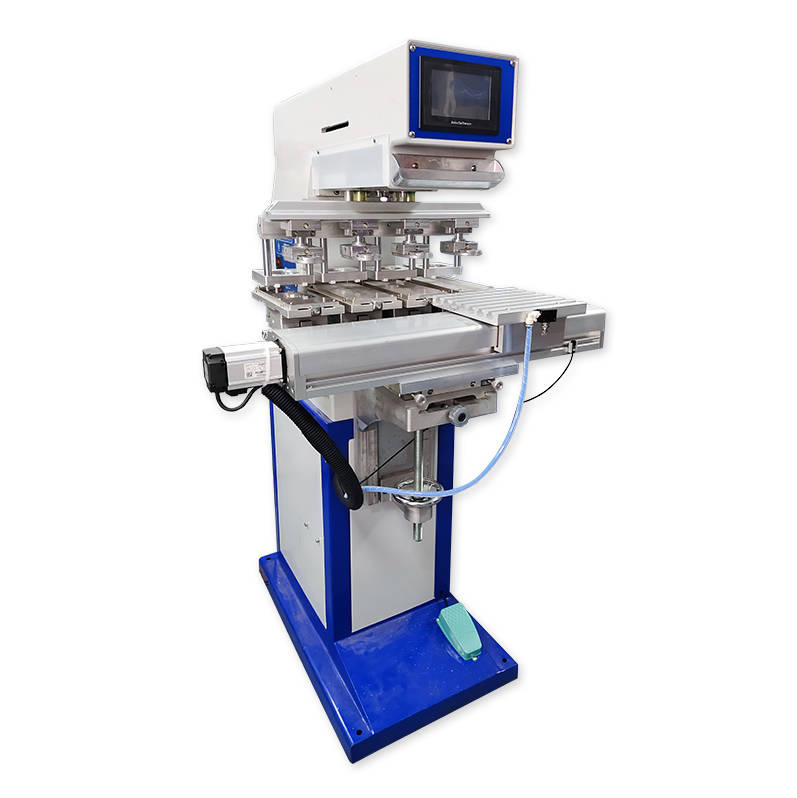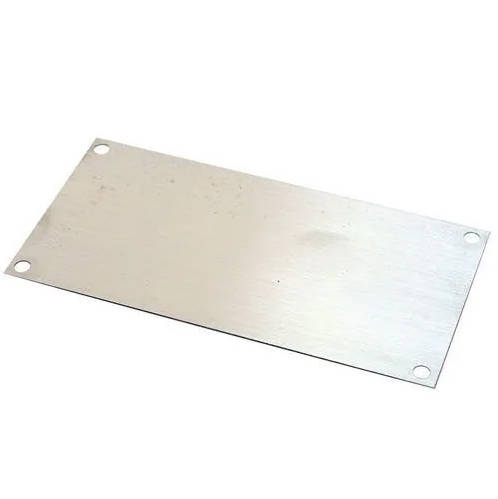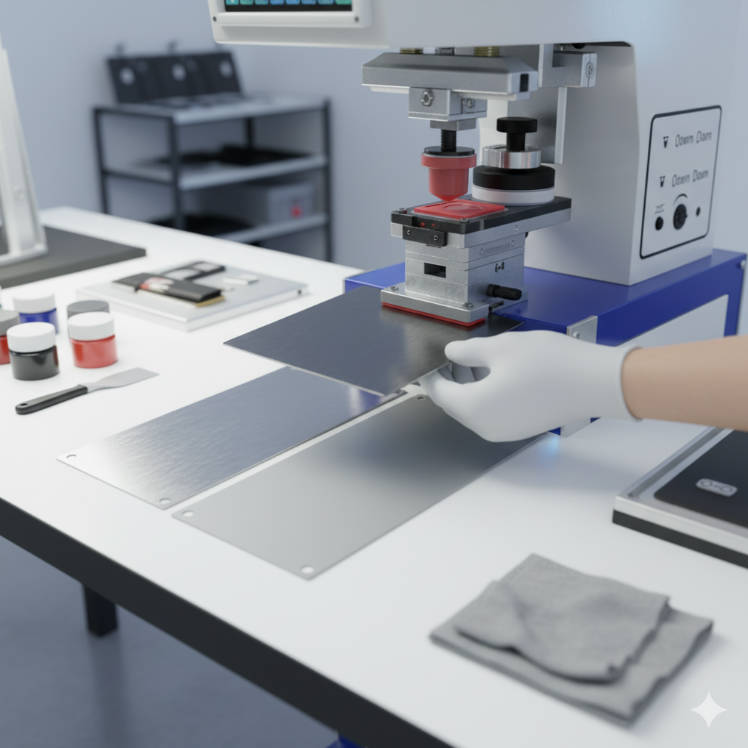Introduction
Pad printing is a versatile and widely adopted printing technique used across industries such as promotional products, medical devices, electronics, and automotive manufacturing. Among the variety of pad printing equipment available, four-color closed ink cup pad printers have gained attention for their ability to deliver high-quality, multi-color prints on complex and irregular surfaces. This article provides a detailed comparison between four-color closed ink cup pad printers and other printing technologies, including screen printing, digital inkjet, and open ink well pad printing. By evaluating factors such as print quality, versatility, cost, speed, and ease of use, we aim to guide you in selecting the right Pad Printing Machines for your specific needs.

Understanding Four-Color Closed Ink Cup Pad Printers
Four-color closed ink cup pad printers are advanced Pad Printing Machines engineered for precision and efficiency. Unlike traditional systems, these machines feature a closed ink cup that seals the ink and slides across an etched plate, transferring it to the substrate via a silicone pad. The four-color capability, utilizing cyan, magenta, yellow, and black (CMYK) inks, enables vibrant and high-resolution multi-color prints.
Key Features
- High precision: Excellent for multi-color designs with tight registration.
- Minimal ink waste: The sealed cup reduces evaporation, ensuring consistency and cost savings.
- Automation options: Features like servo sliding tables and rotary jigs boost productivity.
Popular models,are renowned for their reliability and advanced capabilities. These machines are ideal for applications requiring detailed, colorful designs, such as printing on pens, bottles, and medical devices. For businesses seeking an automatic pad printing machine, these systems offer a blend of precision and scalability.
Overview of Competing Printing Technologies
To fully appreciate the strengths of four-color closed ink cup pad printers, it’s essential to compare them with other widely used printing methods:
- Open Ink Well Pad Printing: Uses an open ink reservoir and a doctor blade to wipe the plate. It’s effective for long images and short runs, often seen in golf ball and plastic housing printing.
- Screen Printing: Involves pushing ink through a mesh screen onto the substrate. It excels in apparel, posters, and large industrial parts but lacks precision for fine details.
- Digital Inkjet Printing: A non-contact process where ink droplets are sprayed from printheads. It’s perfect for personalized items and photorealistic images on flat surfaces.
Other methods, such as flexography and gravure, cater to high-volume packaging and large-scale printing but are less relevant for typical pad printing users.
Head-to-Head Comparison: Four-Color Closed Ink Cup Pad Printers vs. Other Technologies
Here’s a detailed comparison of these technologies across key metrics:
| Factor | Four-Color Closed Ink Cup | Open Ink Well Pad Printing | Screen Printing | Digital Inkjet |
| Print Quality | Superior for vibrant, multi-color designs | Good for simple or single-color designs | Bold colors, struggles with details | Photorealistic images |
| Versatility | Excellent for 3D and irregular surfaces | Best for long images, less flexible | Limited to flat or slightly curved surfaces | Best for flat surfaces |
| Speed | Moderate (hundreds to thousands of cycles/hour) | Slower due to manual adjustments | Slow for multi-color | Fast for flat surfaces |
| Setup Time | Quick with tool-less systems | Longer due to ink management | Time-consuming screen prep | Minimal for flat surfaces |
| Cost | Moderate to high initial, low operating costs | Lower initial, higher ink use | Low equipment, high labor | High initial, low consumables |
| Ease of Use | User-friendly with automation | Requires skilled operators | High skill for screen prep | Easy with software, technical maintenance |
This table highlights that four-color closed ink cup pad printers strike a balance between quality, versatility, and efficiency, making them a compelling option for diverse applications.
Advantages of Four-Color Closed Ink Cup Pad Printers
- High-Quality Multi-Color Printing: These machines excel at producing vibrant, accurate colors, perfect for intricate designs.
- Minimal Ink Waste: The closed system reduces evaporation, lowering costs and maintaining print consistency.
- Versatility: They handle a variety of substrates and shapes, including plastics, metals, and glass.
- Automation and Efficiency: Options like servo-driven systems make them ideal for medium to high-volume production.
- Eco-Friendly: Less solvent evaporation compared to open ink well systems benefits the environment.
For businesses evaluating pad printing machine price, the long-term savings in ink and labor often offset the initial investment.
Limitations of Four-Color Closed Ink Cup Pad Printers
- Higher upfront cost compared to open ink well systems.
- Limited to smaller image sizes (e.g., up to 140mm diameter with 150mm ink cups).
- Less suited for photorealistic images compared to digital inkjet.
- Maintenance of ceramic rings and ink cups can add to operational costs.
Common User Questions Answered
- Can they print on irregular surfaces? Yes, silicone pads adapt to 3D shapes, unlike screen or inkjet methods.
- How do costs compare? They’re pricier upfront than open ink well systems but more cost-effective than screen printing for multi-color work.
- Are they suitable for small businesses? Yes, especially semi-automatic models, though budget and volume should be assessed.
- How do they compare to digital inkjet for personalization? Inkjet excels in variable data, but pad printing is superior for 3D objects and durability.
For detailed pricing, contacting pad printing machine suppliers like Inkcups or FineCause is recommended.
Applications and Industry Use Cases
Four-color closed ink cup pad printers serve a wide range of industries:
- Promotional Products: Printing logos on pens, mugs, and keychains.
- Medical Devices: Precision printing on syringes, catheters, and dental tools.
- Electronics: Marking keyboards, control panels, and casings.
- Automotive: Decorating knobs, buttons, and interior components.
For instance, Inkcups machines are used for silicone wristbands, while FineCause’s servo-driven printers handle contact lenses, showcasing their adaptability.
Key Considerations for Choosing a Printing Technology
When deciding on a printing solution, consider these factors:
- Production Needs: High-volume multi-color printing favors closed ink cup systems; short runs may suit open ink well or screen printing.
- Substrate and Design Requirements: Complex shapes need pad printing; flat surfaces may benefit from inkjet.
- Budget: Weigh initial costs against long-term savings in ink, labor, and maintenance.
- Operator Expertise: Assess training requirements for each technology.
- Future Scalability: Automation and IoT integration in closed ink cup systems support growth.
Trends and Innovations in Pad Printing for 2025
The pad printing industry is advancing with notable trends:
- Automation: Servo-driven systems and IoT enable real-time monitoring
- Eco-Friendly Inks: UV-curable and water-based inks promote sustainability.
- Hybrid Systems: Combining pad printing with digital inkjet for personalization.
- Improved Precision: Laser positioning and thermostatic systems enhance ink transfer.
- Market Growth: The global pad printer market, valued at USD 1.2 billion in 2024, is driven by automation and demand in Asia-Pacific.
Conclusion
Four-color closed ink cup pad printers offer a powerful mix of high-quality multi-color printing, versatility, and efficiency, making them an excellent choice for many businesses. While their initial cost is higher, their benefits in ink savings, automation, and eco-friendliness provide long-term value. When selecting a printing technology, evaluate your production needs, substrate types, and budget. Consulting reputable pad printing machine suppliers like ENGY can help you find the ideal automatic pad printing machine for your operations.





